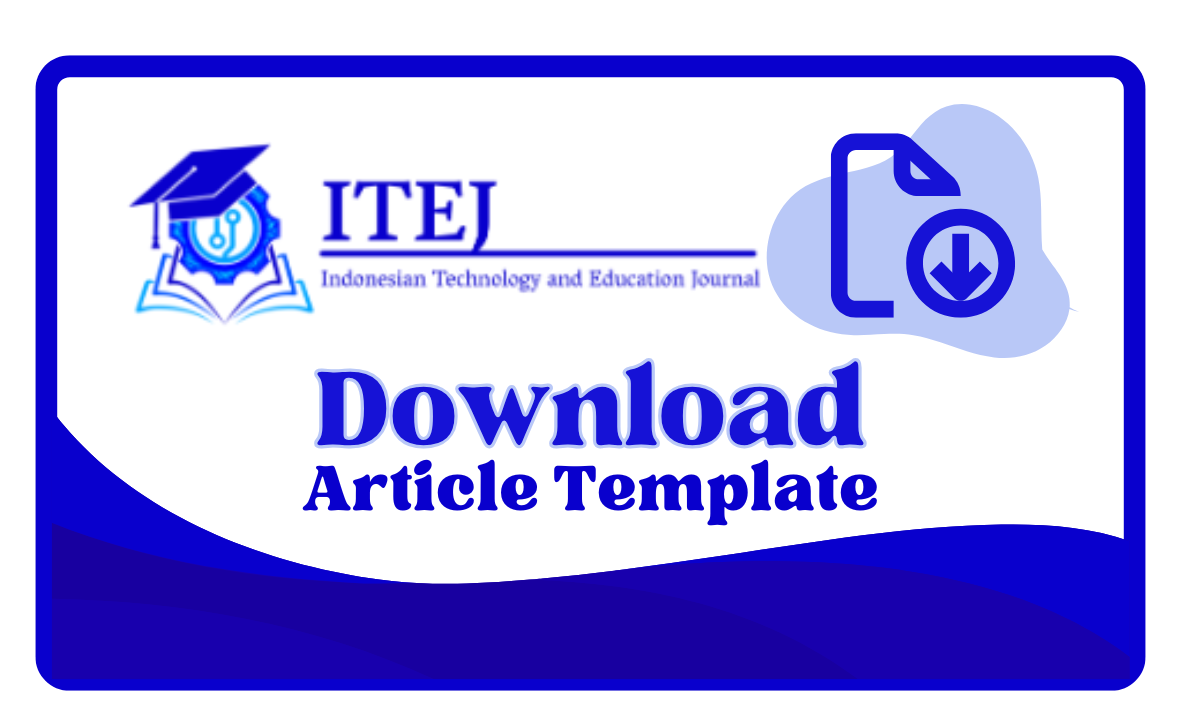Social Environment and Internet Engagement as Predictors of Cyberbullying in Young People
Keywords:
Cyberbullying, Social Environment, Young Generation, Digital Literacy, Mental HealthAbstract
Social media has become an important part of young people's lives, not only as a means of communication and entertainment, but also as a space for intense social interaction. The high intensity of internet use brings both positive opportunities and risks, one of which is cyberbullying which has a serious impact on mental health, such as anxiety and depression. This study aims to analyze the effect of internet usage intensity and social environment on cyberbullying tendencies in college students. The research method used a quantitative approach with a cross-sectional design. Data were obtained through a five-point Likert scale online questionnaire filled out by 83 respondents from various generations. Descriptive analysis showed that aspects of social media use were quite high, while direct experience of cyberbullying was relatively lower. Social environment support was moderate, but awareness of cyberbullying prevention was high. The findings indicate that the intensity of internet use potentially increases the risk of cyberbullying, but social environmental factors and digital awareness can serve as important protections. This research provides practical contributions in the form of recommendations for digital literacy, strengthening family support, and social media monitoring to create a safer digital ecosystem for the younger generation.
 Abstract views: 37
,
Abstract views: 37
,  PDF downloads: 29
PDF downloads: 29
Downloads
References
F. F. Noorikhsan, H. Ramdhani, B. C. Sirait, and N. Khoerunisa, “Dinamika Internet, Media Sosial, dan Politik di Era Kontemporer: Tinjauan Relasi Negara-Masyarakat,” Journal of Political Issues, vol. 5, no. 1, pp. 95–109, 2023.
M. S. Hartarto Hadi and M. Akbar Fhad Syahril, “Melindungi Generasi Muda dari Intimidasi Online: Solusi Mengatasi Cyber Bullying di Era Digital,” ACS Journal, vol. 2, no. 2, pp. 75–79, 2024.
C. Jayaputri, “Cyberbullying dan Tantangan Hukum,” Jurnal Penelitian Hukum Legalitas, vol. 1, pp. 27–34, 2020.
Z. Zhang, “Cyberbullying: A Comprehensive Analysis of its Psychological Impact and Preventive Measures,” Journal of Education, Humanities and Social Sciences, vol. 26, pp. 655–660, 2024, doi: 10.54097/yqsdng51.
D. Riswanto and R. Marsinun, “Perilaku Cyberbullying Remaja di Media Sosial,” Analitika, vol. 12, no. 2, pp. 98–111, 2020, doi: 10.31289/analitika.v12i2.3704.
A. A. Permatasari, “Cyberbullying sebagai Kekerasan Berbasis Gender Online: Dampak terhadap Remaja serta Peran Keluarga,” Jurnal Wanita Dan Keluarga, vol. 3, no. 1, pp. 1–15, 2022, doi: 10.22146/jwk.5201.
W. Welly and G. Rahma, “Cyberbullying Selama Pembelajaran Daring pada Anak Sekolah Dasar,” JIK Jurnal Ilmu Kesehatan, vol. 6, no. 2, p. 380, 2022, doi: 10.33757/jik.v6i2.613.
N. Irmayanti and F. O. Grahani, “Bersama Lawan Kekerasan Digital: Peran Orang Tua dan Teman Sebaya dalam Mengatasi Cyberviolance,” Jurnal Psikologi: Jurnal Ilmiah Fakultas Psikologi Universitas Yudharta Pasuruan, vol. 10, no. 2, pp. 296–304, 2023, doi: 10.35891/jip.v10i2.4259.
P. Dwi Yanti, Sardin, and N. Fajria Utami, “Pengaruh Interaksi Digital terhadap Tingkat Cyber Dating Abuse pada Generasi Z,” ENTITA: Jurnal Pendidikan Ilmu Pengetahuan Sosial Dan Ilmu-Ilmu Sosial, vol. 5, no. 1, pp. 139–154, 2023, doi: 10.19105/ejpis.v5i1.8100.
A. P. B. Kumala and A. Sukmawati, “Dampak Cyberbullying Pada Remaja,” Alauddin Scientific Journal of Nursing, vol. 1, no. 1, pp. 55–65, 2020, doi: 10.24252/asjn.v1i1.17648.
Sugiyono, Metode Penelitian Kuantitatif, Kualitatif, dan R&D. Bandung: Alfabeta, 2018.
A. Fransiska, S. Agustian, F. Insani, M. Fikry, and P. Pizaini, “Algoritme Logistic Regression untuk Mendeteksi Ujaran Kebencian dan Bahasa Kasar Multilabel pada Twitter Berbahasa Indonesia,” Jurnal Nasional Komputasi dan Teknologi Informasi (JNKTI), p., 2022, doi: 10.32672/jnkti.v5i4.4524.
S. Purnama and K. A. Sukarto, “PENGGUNAAN BAHASA DI MEDIA SOSIAL DITINJAU DARI KESANTUNAN BERBAHASA,” Pujangga, p., 2022, doi: 10.47313/pujangga.v8i1.1655.
I. A. N. Gunawan, . S., and I. Shalahuddin, “Dampak Penggunaan Media Sosial Terhadap Gangguan Psikososial Pada Remaja: A Narrative Review,” Jurnal Kesehatan, vol. 15, no. 1, pp. 78–92, Jun. 2022, doi: 10.23917/jk.v15i1.17426.
A. Yolanda and G. N. Pramudyo, “Literasi Digital sebagai Sarana Mencegah Perilaku Cyberbullying pada Remaja Kota Tangerang di Media Sosial Instagram,” ANUVA, vol. 8, no. 1, pp. 161–172, 2024.
Marhamah, “DIGITAL LITERACY AND CYBERBULLYING BEHAVIOR OF YOUTHS IN INSTAGRAM.” [Online]. Available: https://andi.link/hootsuite-we-are-social
H. Stevenson and C. Davenport-Kellogg, “A Peer Support Community on Social Media: A Counter Narrative to Cyberbullying,” 2021.
E. W. Wuryanningsih, E. H. Kurniyawan, and E. C. Aisyah, “Correlation Between Emotional Peer Support and Cyberbullying Behaviour in Senior High School Students,” Jurnal Ners, vol. 14, no. 2, pp. 205–209, Oct. 2019, doi: 10.20473/jn.v14i2.13726.
A. Nasution Mangintir, N. Tresniasari, and S. Solicha, “Cyberbullying: Life Satisfaction and Social Suport among Adolescent,” European Alliance for Innovation n.o., Apr. 2020. doi: 10.4108/eai.18-9-2019.2293420.
N. Noret, S. C. Hunter, and S. Rasmussen, “The Role of Perceived Social Support in the Relationship Between Being Bullied and Mental Health Difficulties in Adolescents,” School Ment Health, vol. 12, no. 1, pp. 156–168, Mar. 2020, doi: 10.1007/s12310-019-09339-9.
M. Yıldız and J. Eldeleklioğlu, “Relations between perceived social support, attachment and kindness in high school students,” Journal of Pedagogical Research, vol. 8, no. 1, pp. 120–142, Mar. 2024, doi: 10.33902/JPR.202425168.
M. F. Yiğit, S. Keskin, and H. Yurdugül, “Investigating the Relationship between Cyberbullying and Perceived Family Support in Middle-School Students in Relation to Gender, Frequency of Internet Use, and Grade,” Addicta: The Turkish Journal on Addictions, vol. 5, no. 2, Aug. 2018, doi: 10.15805/addicta.2018.5.2.0050.
A. Efianingrum, S. Irene Astuti Dwiningrum, and R. Nurhayati, “Cyberbullying pelajar SMA di media sosial …,” 2020.
G. Gohal et al., “Prevalence and related risks of cyberbullying and its effects on adolescent,” BMC Psychiatry, vol. 23, no. 1, Dec. 2023, doi: 10.1186/s12888-023-04542-0.
S. Azfa and N. ’ Mah, “Pengaruh Cyberbullying pada Kesehatan Mental Remaja,” 2022.
N. Y. Muhammed and Y. A. A. Samak, “The impact of cyberbullying on adolescents: social and psychological consequences from a population demography perspective in Assiut Governorate, Egypt,” Frontiers in Human Dynamics, vol. 7, 2025, doi: 10.3389/fhumd.2025.1519442.
W. Craig and others, “Social Media Use and Cyber-Bullying: A Cross-National Analysis of Young People in 42 Countries,” Journal of Adolescent Health, vol. 66, no. 6, pp. S100–S108, 2020, doi: 10.1016/j.jadohealth.2020.03.006.
M. Židová, K. Hollá, and Ľ. Rybanský, “PARENTAL CONTROL AND CYBERBULLYING,” in EDULEARN21 Proceedings, IATED, Jul. 2021, pp. 10059–10068. doi: 10.21125/edulearn.2021.2072.
G. Buda, J. Lukoševičiūtė, L. Šalčiūnaitė, and K. Šmigelskas, “Possible Effects of Social Media Use on Adolescent Health Behaviors and Perceptions,” Psychol Rep, vol. 124, no. 3, pp. 1031–1048, Jun. 2021, doi: 10.1177/0033294120922481.
P. Nirmala et al., “Enhancing Computational Thinking Skills through Digital Literacy and Blended Learning: The Mediating Role of Learning Motivation,” Online Learning In Educational Research (OLER), vol. 5, no. 1, pp. 9–24, Jun. 2025, doi: 10.58524/oler.v5i1.504.
Downloads
Published
How to Cite
Issue
Section
License
Copyright (c) 2025 Herawati, Shalsa Nabila, Putri Nirmala, Ummul Khaeri Masna

This work is licensed under a Creative Commons Attribution-ShareAlike 4.0 International License.







